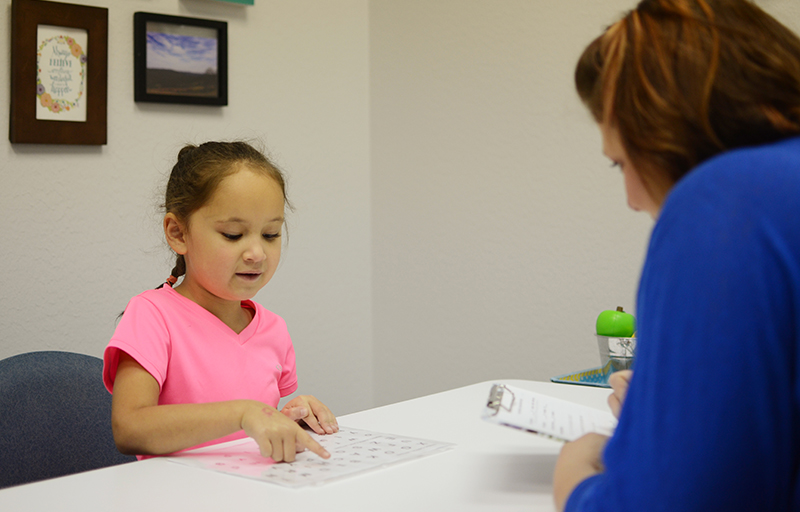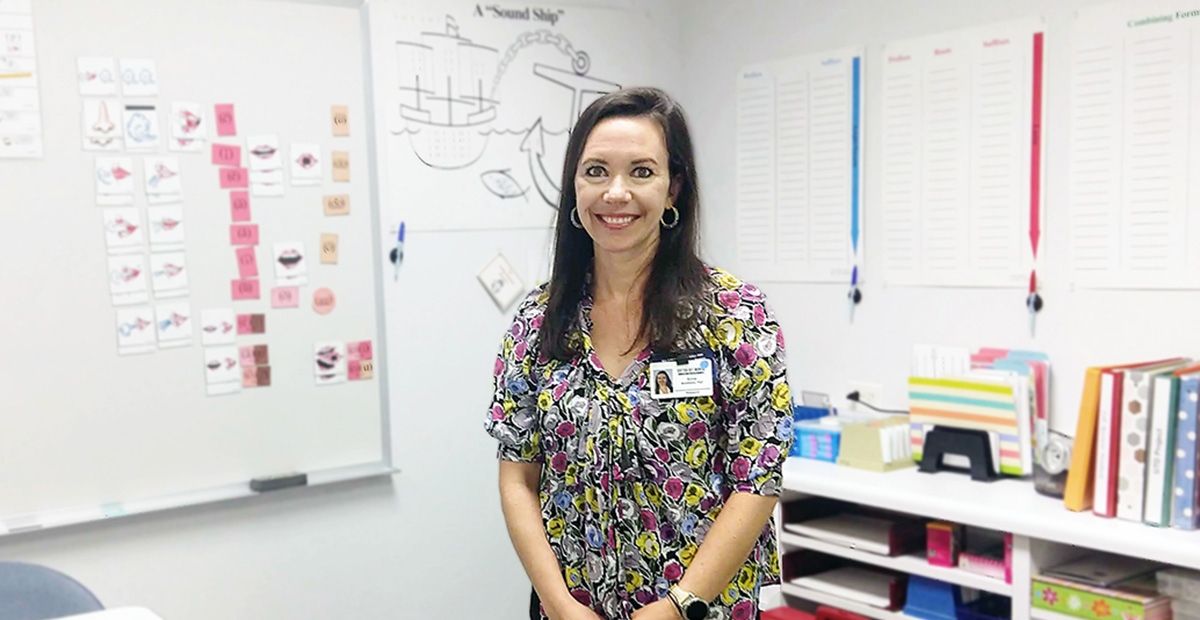Each year, the Luke Waites Center education staff enroll a new cohort of students with dyslexia to receive intervention within our own Dyslexia Laboratory School. All students receiving treatment at the Lab School receive instruction in the center’s published curriculum, Take Flight: A Comprehensive Curriculum for Students with Dyslexia (Avrit et al., 2006). Take Flight is a scientifically based dyslexia intervention program derived from Orton Gillingham principles of instruction (Avrit et al., 2006; Ring, Avrit, & Black, 2017). The curriculum scope was developed according to evidence-based best practices for teaching the important components of a comprehensive reading program (e.g., NICHD, 2000).
The data collected from patients seen in our lab allow the research team to document response to treatment within a controlled educational setting, and to evaluate factors that may impact treatment outcomes. These data also supportour staff in further developing and refining instructional materials and procedures that will be used in their Therapist Training program.
- Middleton, A. E., Farris, E. A., Ring, J. J., & Odegard, T. N. (2021). Predicting and Evaluating Treatment Response: Evidence Toward Protracted Response Patterns for Severely Impacted Students With Dyslexia. Journal of Learning Disabilities, https://doi.org/10.1177/00222194211047633
- Ring, J., Black, J.L. The multiple deficit model of dyslexia: what does it mean for identification and intervention?. Ann. of Dyslexia 68, 104–125 (2018). https://doi.org/10.1007/s11881-018-0157-y
- Ring, J.J., Avrit, K.J. & Black, J.L. Take Flight: the evolution of an Orton Gillingham-based curriculum. Ann. of Dyslexia 67, 383–400 (2017). https://doi.org/10.1007/s11881-017-0151-9
- Ring JJ, Barefoot LC, Avrit KJ, Brown SA, Black JL. Reading Fluency Instruction for Students at Risk for Reading Failure. Remedial and Special Education. 2013;34(2):102-112. doi:10.1177/0741932511435175
Download a PDF of our
Reference List.
The projects encompassed under this line of research seek to document response to treatment in samples of children with dyslexia who are receiving dyslexia intervention services in public school settings. Students’ performance is measured at various points throughout the intervention program to measure growth in reading and related language skills. Response to treatment will be compared across program types; specifically, the team will evaluate the comparative efficacy of Scottish Rite interventions to various other methods commonly employed in local public schools. Individual response to treatment and growth trajectories are also evaluated.
- Middleton, A. E., Farris, E. A., Ring, J. J., & Odegard, T. N. (2021). Predicting and Evaluating Treatment Response: Evidence Toward Protracted Response Patterns for Severely Impacted Students With Dyslexia. Journal of Learning Disabilities, https://doi.org/10.1177/00222194211047633
- Ring, J., Black, J.L. The multiple deficit model of dyslexia: what does it mean for identification and intervention?. Ann. of Dyslexia 68, 104–125 (2018). https://doi.org/10.1007/s11881-018-0157-y
- Ring, J.J., Avrit, K.J. & Black, J.L. Take Flight: the evolution of an Orton Gillingham-based curriculum. Ann. of Dyslexia 67, 383–400 (2017). https://doi.org/10.1007/s11881-017-0151-9
- Ring JJ, Barefoot LC, Avrit KJ, Brown SA, Black JL. Reading Fluency Instruction for Students at Risk for Reading Failure. Remedial and Special Education. 2013;34(2):102-112. doi:10.1177/0741932511435175
Download a PDF of our
Reference List.
Great strides have been made in the development of effective methods of instruction for children with dyslexia. However, individual response to treatment varies, and a proportion of students with dyslexia demonstrate persistent weaknesses despite otherwise effective instruction. Continued efforts are needed to support the prospective identification of poor responders, particularly in routine intervention settings. In collaboration with researchers in the Center for Dyslexia at Middle Tennessee State University, our dyslexia research team is partnering with local schools to collect data surrounding individual response to treatment for children receiving dyslexia interventions in their schools. The objective of this line of work is to identify early indicators of treatment response that may be used in further individualizing treatment for those at risk for reduced response to typical intervention methods.
- Middleton, A. E., Farris, E. A., Ring, J. J., & Odegard, T. N. (2021). Predicting and Evaluating Treatment Response: Evidence Toward Protracted Response Patterns for Severely Impacted Students With Dyslexia. Journal of Learning Disabilities, https://doi.org/10.1177/00222194211047633
- Ring, J., Black, J.L. The multiple deficit model of dyslexia: what does it mean for identification and intervention?. Ann. of Dyslexia 68, 104–125 (2018). https://doi.org/10.1007/s11881-018-0157-y
- Ring, J.J., Avrit, K.J. & Black, J.L. Take Flight: the evolution of an Orton Gillingham-based curriculum. Ann. of Dyslexia 67, 383–400 (2017). https://doi.org/10.1007/s11881-017-0151-9
- Ring JJ, Barefoot LC, Avrit KJ, Brown SA, Black JL. Reading Fluency Instruction for Students at Risk for Reading Failure. Remedial and Special Education. 2013;34(2):102-112. doi:10.1177/0741932511435175
Download a PDF of our
Reference List.





?width=1200&height=616&ext=.jpg)
